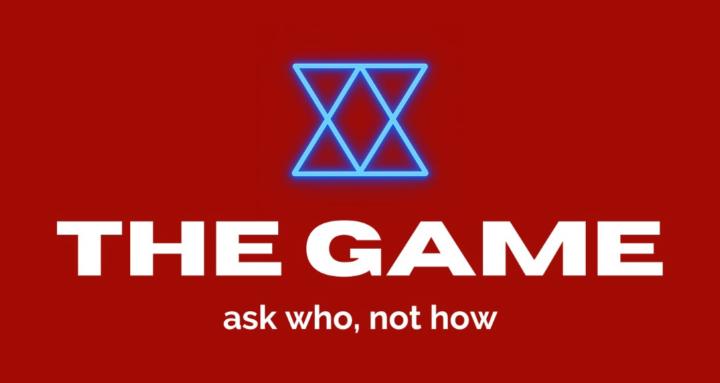3d (edited) • 🌐 Networking
Which Chess Piece(s) Are You Playing As?
What if chess pieces were more than just game tokens?
What if each one held secrets about human nature, psychology, and the patterns that govern our world?
Consider this while you are networking. Which chess piece(s) are you playing as for this challenge? Which one are you encountering?
Each chess piece represents a unique way of thinking, moving through the world, and solving problems.
These aren't just game pieces—they're archetypes for different types of consciousness, each with their own personality, philosophy, and hidden potential.
The Pawn: The Unlikely Hero's Journey
Every pawn starts the same way—small, limited, taking one tentative step forward at a time.
However, the pawn is the only piece that can completely transform its identity. A humble pawn that reaches the other side of the board can become a queen—the most powerful piece in the game. It's the ultimate underdog story, built right into the rules.
The Pawn's Psychology:
- Never goes backward (like time itself—always moving forward)
- Gets one chance at a double-step when starting fresh (that burst of beginner's enthusiasm)
- Attacks differently than it moves (peaceful until provoked)
- Can capture "in passing" (seizing those fleeting opportunities)
Pawns are strongest in groups, forming chains and protective structures. Alone, they're vulnerable. Together, they control the entire game. There's a profound life lesson here about collective strength and the power of patient progress.
The Knight: The Creative Rule-Breaker
The knight is chess's rebel—the only piece that refuses to move in straight lines. That awkward L-shaped hop might look clumsy, but it's pure genius: the knight can reach any square on the board and is the only piece that can jump over obstacles.
Knights Think Differently:
- They see paths others can't (literally jumping over obstacles)
- Always land on a different color (constantly shifting perspective)
- Create "forks" (attacking two pieces at once through creative positioning)
- Thrive in cramped positions where other pieces struggle
In closed positions where bishops and rooks are trapped behind their own pieces, knights dance freely. They represent lateral thinking—the ability to solve problems by approaching from unexpected angles. Every knight move is a small "aha!" moment.
The Bishop: The Focused Specialist
- Here's something beautifully poetic: each bishop can only ever touch half the squares on the board. They're forever bound to either light or dark squares. But this isn't a limitation—it's focused expertise.
The Bishop's Wisdom:
- Increases in power as obstacles clear (knowledge needs space to flourish)
- Works best in pairs (covering each other's blind spots)
- Can control entire diagonals from corner to corner
- Patient and strategic (waiting for the perfect moment to strike)
Bishops teach us about the power of specialization. They may only see half the board, but within their domain, they see everything. Two bishops working together are often worth more than two knights because specialized expertise, when coordinated, creates emergent power.
The Rook: The Straightforward Powerhouse
Rooks are the strong, silent types of chess. They move only in straight lines—up, down, left, right. No subtlety, no tricks, just pure directional force.
The Rook's Philosophy:
- Needs open lines to be effective (clear communication channels)
- Loves the 7th rank (deep in enemy territory but not overextended)
- Works best in pairs (creating devastating crossfire)
- Patient in opening, dominant in endgame
What's remarkable is that rooks embody mathematical perfection in their movement patterns. This represents natural power expressed through elegant efficiency—the same kind of direct force found in nature's most powerful designs.
The Queen: The Integrated Mind
The queen combines every type of movement—she's bishop and rook unified in one piece. But here's the paradox: despite being the strongest piece, the queen is often the most vulnerable because of her immense value.
The Queen's Complexity:
- Can control 27 squares from the center (more than any other piece)
- Often does the heavy lifting in attacks
- Vulnerable to being "overworked" (doing too many jobs at once)
- Her sacrifice is psychologically devastating (the ultimate strategic gambit)
The queen represents integrated consciousness—having all abilities but needing to use them wisely. She shows us that with great power comes great responsibility (and great vulnerability). Sometimes the most capable person becomes the biggest target.
The King: The Paradox of Leadership
The king is chess's greatest paradox—simultaneously the most important and the weakest piece. It can only move one square at a time, yet the entire game revolves around its safety.
The King's Truth:
- Cannot be captured, only cornered (like consciousness itself)
- Weak in the opening, strong in the endgame
- Two kings can never touch (like opposing forces that repel)
- Defines victory and defeat
In the endgame, when most pieces are gone, the king transforms from liability to fighter. This mirrors how true leadership often means staying protected until the critical moment, then stepping forward when it matters most.
The Beautiful System in Action
What makes chess endlessly fascinating is how these six personality types create a living, breathing system:
- Pawns teach us about potential and transformation
- Knights show us creative problem-solving
- Bishops demonstrate focused expertise
- Rooks embody direct, proportional power
- Queens represent integrated capability
- Kings show us the paradox of importance and vulnerability
Each piece achieves its full nature only through interaction with others. A knight in the corner is sad; a knight in the center is a monster. A bishop pair is poetry; a single bishop can feel like a prison.
Why This Matters Beyond the Board
These aren't just game pieces—they're mirrors reflecting different aspects of how we think, work, and live:
- Are you a pawn, patiently working toward transformation?
- A knight, seeing creative solutions others miss?
- A bishop, mastering your chosen domain?
- A rook, projecting power through clear channels?
- A queen, integrating multiple capabilities?
- A king, accepting both importance and vulnerability?
Most of us embody different pieces at different times. The magic happens when we understand not just our own nature, but how we interact with others in the system.
The Deeper Pattern
Chess has survived 1,500 years not because it's a war game, but because it's a perfect model of how different types of consciousness interact. Each piece represents a fundamental way of navigating space and possibility.
When you watch grandmasters play, you're not just seeing a game—you're watching different modes of thought dance together, creating patterns so complex that even supercomputers can't fully map them.
The next time you play chess (or face any strategic decision), remember: each piece on the board is teaching you something about how to think, how to move through the world, and how to work with others whose strengths complement your own.
After all, even a pawn can become a queen—but only by moving forward, one square at a time, never forgetting the transformative power that lies dormant within.
6
3 comments

skool.com/game
Only for Community Builders.
Network to change the world.
Ask who, not how.
Powered by





